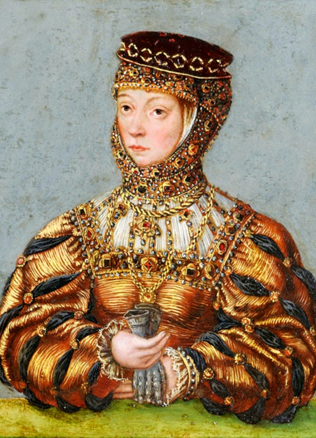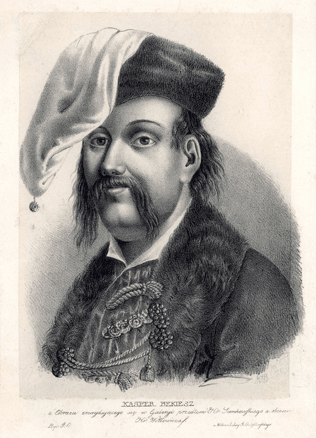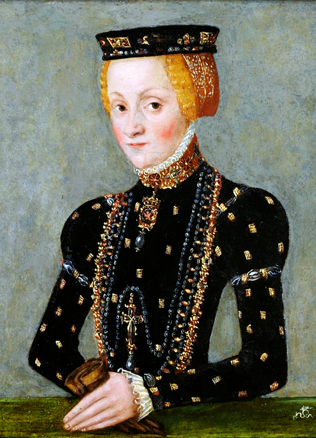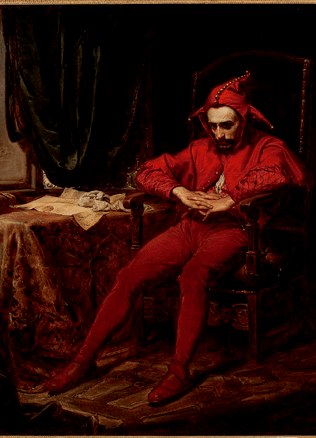Grand Duke and holder of the patrimony – the ruler in medieval Lithuania
In a medieval state, with constant political structures and institutions absent, the ruler was the only person who combined and embodied a political formation. The early monarchy was not a territorial state but sooner a group of people related to the risen ruler by personal links. Therefore, the creation of the Lithuanian State is reasonably identified with the rise of a single ruler (monarch) Mindaugas. It was unfavourable circumstances that determined the fact that the title of the King acquired by Mindaugas in 1253 did not become established for Lithuania’s rulers.
Lithuania’s “kings” and “basileus”
The title of Grand Duke of Lithuania (Lat. magnus dux, Rus. великии князь, Germ. grosfurste), as an official definition of Lithuania’s ruler, finally became established in the years of the rule of Vytautas only, at the beginning of the 15th century. Until that time the rulers of Lithuania were referred to as kings, basileus, and dukes in their documents and foreigners’ texts. Lithuania’s monarchs used the title taking into consideration the existing tradition of the other side. Therefore Gediminas introduced himself to Pope John XXII in Latin as “King of the Lithuanians and the majority of the Russians”; Algirdas used the Greek title of “basileus” when introducing himself to the Patriarch of Constantinople, and only “grand dukes” are known in Russian documents and annals. The Germanism “priest” taken over in the first millennium most probably was further used in the Lithuanian language of that time, which only later, under the influence of the Slavic language, (Czeck. král, pol. król, Rus. korol’) was replace by “king”, the word created from the king of the Franks Charles the Great and “duke” accentuating the factor of origin.
In his letters to Pople John XXII and the cities of Hansa Gediminas states that he is a sovereign ruler , “the greatest in his country” who has the right “to give instructions and orders, to condemn and forgive, to enclose and open” in his estates.”
According to the understanding of that time he was the Ruler not only of “Lithuania” but also of “the Lithuanians”, “Russians” and “Samogitians”. This personal relation between the Ruler and his noble subordinates was fundamental, it was valid only while a concrete ruler ruled. Upon the death of the latter, the successor had to establish such relations anew. Therefore, usually inheritance and symbolic procedures were foreseen in advance and coordinated with the political elite of the country – the sources testify to personal oaths to the new ruler.
The Ruler walking from yard to yard
Practices of governance of that time are related to a personal understanding of power. First of all, that was governance when travelling. The medieval ruler was rex ambulans – “a travelling king”. Constant journeys were determined by political and economic reasons. By his visits to nearer or more distant communities the ruler reminded them of and accentuated the monarch’s power, and at the same time consumed the products accumulated in those estates for him and his escort, which could not be transported to the centre of the country. The kernel of the country – the eastern part of ethnic Lithuania (Lithuania propria) was visited most often. Another form of governance of the state was meetings (Council) held in the surroundings of the Ruler. Therefore, the Duke’s power cannot be perceived separately from the nobility, and one of the main levers of the ruler’s activity and influence in the Middle Ages was the role of the arbiter in solving conflicts that arose between the groups of the nobility.
Success of governance of the Grand Duke was determined to a great extent by how he managed to coordinate interests of different groups of the governing elite.
Do You Know?
The monarchy established by Mindaugas, despite later agreements, remained a prevailing form of governance. In the years of the rule of Gediminas, governance of the new dynasty was finally established. Direct descendents of Gediminas ruled in the country who regarded themselves to be recognised natural rulers – holders of the patrimony (domini naturales), and the state was referred to as the patrimony of the Ruler. Different exclusive rights (regalia) of the Ruler appeared one after another – the lands of “nobody”, construction of castles, minting of coins and others. Insult of the Ruler’s person or even of the sign of his power were regarded as a crime deserving the greatest and most severe punishment.
Vytautas’ estate: from a person to the institution
Institutional strengthening of power of the Grand Duke was related to the implementation of the administrative system that became especially active in the times of Vytautas. Under his rule the European estate of the Grand Duke was forming, which gave rise to central state offices later. At the same time written documentation, which enabled the words of the Ruler to be spread in a new form of communication, spread in all spheres of public life. The institutional conception of the ruler, as a representative of God in the country, the idea of a Christian ruler governing by way of “God’s grace” (Lat. Dei gratia, Rus. Божью милостью) came together with Christianity. Most probably it was then that the ceremony of inaugurating the Grand Duke formed. This ceremony was usually held in the main church of the country – Vilnius Cathedral – on a feast day by announcing the act of inauguration in public and the Bishop of Vilnius and the Grand Marshal of Lithuania presenting the Ruler’s insignia – the mitre cap and the sword of the Grand Duke. In this way both sides of the Ruler’s governance – secular and spiritual – were symbolically represented.
Do You Know?
The title of Grand Duke of Lithuania (Lat. magnus dux, Rus. великии князь, Germ. grosfurste), as an official definition of Lithuania’s ruler, finally became established in the years of the rule of Vytautas only, at the beginning of the 15th century. Until that time the rulers of Lithuania were referred to as kings, basileus, and dukes in their documents and foreigners’ texts.
The ceremony expressing the rank of the Ruler, political rhetoric and the system of emblems were developed until the end of the dynasty of the Jagiellonians. At the turn of the 14th and the 15th centuries, the emblem (the coat-of-arms) of the Grand Duke – the white Vytis (the rider), which was supplemented with the so-called “pillars of Gediminas” formed. In the times of Vytautas the monarch’s emblem symbolised governance of separate lands (the coats-or-arms of the lands belonging to the Ruler surround the Ruler in the majestic seal created around 1407), and this was in line with the speeding process of the formation of the territory of the Grand Duchy of Lithuania.
The Grand Duke was perceived as the only source of law and the commander of the army.
The old surviving personal relations between the patrimonial monarch and his subordinates were testified to by the fact that in the 16th century the representatives of the Council of Lords in the Grand Duchy of Lithuania were called “members of the ruling body” (Rus. члонки тела его панского).
The divided Ruler: between the cap of the Duke and the crown
In 1447, when Casimir Jagiellon became King of Poland, a long period of personal Polish and Lithuanian union began, which lasted for a short time from 1492 to 1501. This circumstance changed the established relations between the Ruler and the nobility.
Though all Jagiellonians visited the Grand Duchy of Lithuania regularly, a frequent absence of the Ruler disturbed the life of the country and weakened it sovereignty.
Therefore, the idea of inviting other members of the ruling family as Grand Dukes sometimes came to life in the nobiliary Lithuanian society. The Grand Duke was further perceived as the only source of law and justice, he appointed officials, convened the Council and the Sejms, announced Laws. From the point of view of organising the governance of the country, in the second half of the 15th – the first half of the 16th centuries, practice of residence of the rulers changed: finally the system of governance from the stable centre became established, which allowed the size of the estate to be increased. True, this estate of the Grand Duke in Vilnius flourished during short periods: from 1492 to 1501 and from 1544 to 1548 only.
Do You Know?
The document of the 1569 Union of Lublin did not provide for the institution of the Grand Duke. The special ceremony of inaugurating the Grand Dukes did not survive. The title of the Grand Duke became a second part of titling the King of Poland in the Commonwealth of the Two Nations and reflected Lithuania’s equipollent place in the federation of the two nations.
Literature: E. Gudavičius, Valdovas, in: Lietuvos Didžiosios Kunigaikštijos kultūra: tyrinėjimai ir vaizdai, Vilnius, 2001, p. 734–752.
Rimvydas Petrauskas



